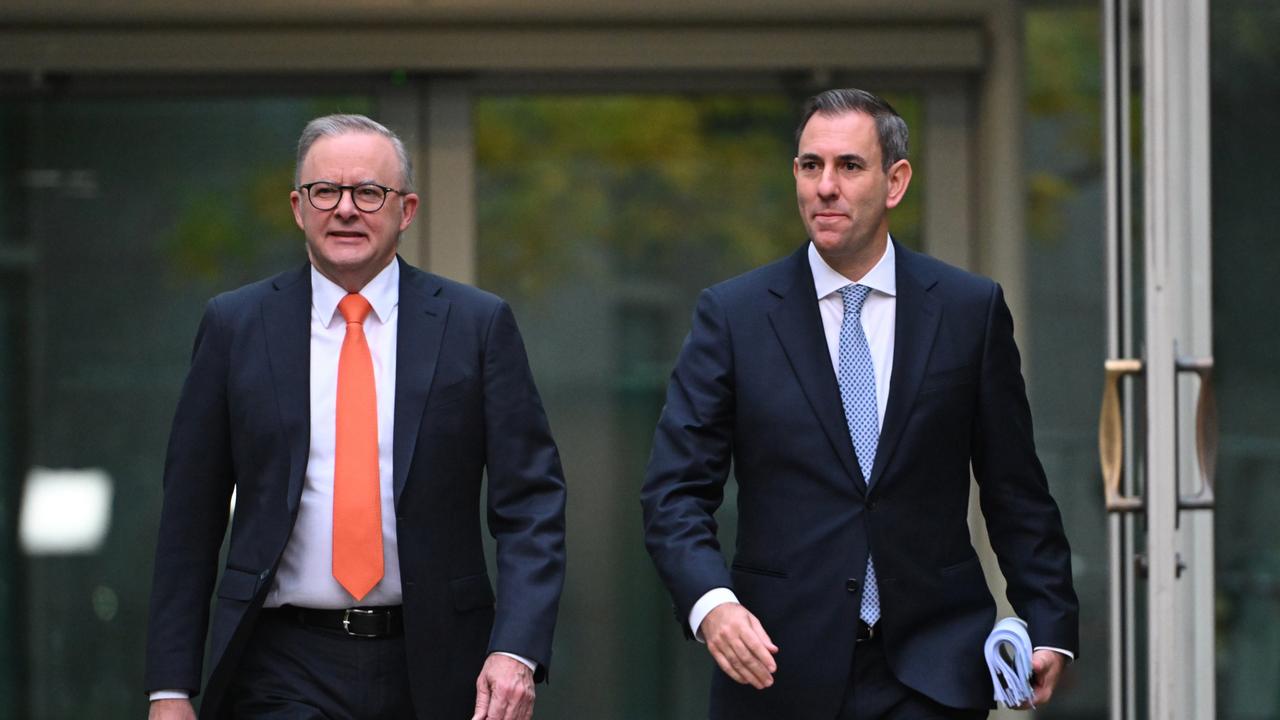By Samantha Maiden
Copyright news

Deals of the Week
4:29PMTuesday, September 16th, 2025
In the know quiz
Set your local weather
Breaking News
Courts & Law
Courts & Law
Courts & Law
Courts & Law
South Australia
Western Australia
Northern Territory
Breaking News
North America
US Politics
South America
Middle East
UK Politics
Health Problems
Mental Health
Inspiration
Weight Loss
School Life
Restaurants & Bars
Food Warnings
Relationships
The Sealed Section
Family & Friends
Fashion Shows
Fashion Trends
Face & Body
Cosmetic Surgery
True Stories
Lifestyle Videos
Travel Ideas
Short Breaks
Food & Drinks
Destinations
North America
New Zealand
Middle East
Central America
South America
Travel Advice
Tips & Tricks
Accommodation
Australian Holidays
Northern Territory
South Australia
Western Australia
Travel Videos
Entertainment
Celebrity Life
Hook Ups & Break ups
Celebrity Photos
Celebrity Kids
Celebrity Deaths
Celebrity Style
Morning Shows
Current Affairs
Upcoming Movies
Movies Reviews
Music Festivals
Books & Magazines
Golden Globes
Entertainment Videos
Social Media
Mobile Phones
Home Entertainment
Archaeology
Environment
Climate Change
Sustainability
Natural Wonders
Motoring News
On the Road
Technology Videos
Cost of Living
How to Save
Salary Secrets
Personal Finance
Superannuation
Australian Culture
Power & Influence
Inside Parliament
Gig Economy
Breaking News
Manufacturing
Other Industries
Australian Economy
World Economy
Interest Rates
Federal Budget
Australian Markets
World Markets
Australian Dollar
Cryptocurrency
Real Estate
Sydney & NSW
Melbourne & VIC
Adelaide & SA
Cricket Live Scores
V8 Supercars
Sports Life
American Sports
Paralympics
Horse Racing
Expert Opinion
More Sports
Sport Videos
Sales & Deals
Home & Appliances
Health & Wellbeing
Environment
Climate Change
Anthony Albanese unveils $1.1 billion investment in vegetable oils
Diesel and petrol could be phased out as the government announces a $1.1 billion investment into low carbon liquid fuels.
Samantha MaidenPolitical Editor
@samanthamaiden
September 16, 2025 – 10:42PM
Listen to this article
Copied URL to clipboard
A brave new world where planes and trucks are fuelled with low-carbon liquid fuel made from Australian canola oil is the centrepiece of the Albanese government’s blockbuster new investment in tackling climate change.
The Albanese government will announce on Wednesday it is investing $1.1 billion to help unlock the economic opportunities on offer from low carbon liquid fuels.
Treasurer Jim Chalmers said the liquid fuels investment aimed to deliver sustainable fuels that can “power our trucks, cargo ships and planes into the future.
“The global net zero transformation is an enormous economic opportunity for Australia and producing low carbon liquid fuels is an important part of that opportunity,’’ he told news.com.au.
“Becoming a world leading producer of low carbon liquid fuels is a really big chance for Australia to be part of a really important growing global supply chain.”
Prime Minister Anthony Albanese and Treasurer Jim Chalmers. Picture: Tracey Nearmy/Getty Images
Get all the latest Australian news as it happens — download the news.com.au app direct to your phone.
The big announcement follows the release of Australia’s first national climate risk assessment, outlining grim predictions of “cascading, compounding and concurrent” risks including rising sea levels, floods, cyclones, heatwaves, droughts and bushfires.
The assessment will inform the government’s new national emissions reduction target for 2035 that is set to be debated by cabinet.
Acting Minister for Infrastructure, Transport, Regional Development and Local Government, Murray Watt, said the liquid fuels reforms had the capacity to create jobs.
“Low carbon fuels have the potential to be a $36 billion industry here in Australia, and we have the opportunity to lead the way on the production of these new fuels,’’ he said.
“We have renewable feedstocks, access to clean energy and a strong agriculture base, all of which will allow us to develop this new industry, create new jobs and power how Australians move for decades to come.”
The new ten-year Cleaner Fuels Program aims to stimulate private investment in Australian onshore production of low carbon liquid fuels, such as renewable diesel and sustainable aviation fuel.
But the first production of ‘drop-in’ cleaner fuels, which can be directly substituted for existing fuels and work in today’s engines, won’t start until 2029.
Copied URL to clipboard
The Albanese government argues that Australia has the ingredients needed to make cleaner liquid alternatives to fossil fuels, with ready access to feedstocks like canola, sorghum, sugar and waste.
Liquid fuels currently make up around half of Australia’s national energy use and replacing those fossil fuels with cleaner alternatives could deliver big gains.
The Clean Energy Finance Corporation (CEFC) estimates an Australian low carbon liquid fuel industry could be worth $36 billion by 2050.
‘Confronting’ warnings
Climate Change and Energy Minister Chris Bowen conceded this week that many Australians will find the warnings of floods, cyclones, bushfires and deaths in climate report “confronting”.
“Many Australians will find this report confronting. I don’t think many Australians would be particularly surprised that climate change is and will have an impact on Australia,’’ he said.
“The report makes clear that insurance will become increasingly a challenge, both in terms of affordability and availability, and that will have flow on effects.”
Risks in Sydney and Melbourne
The report included a stunning graph that outlines the projected increase in heat related deaths in Sydney, Melbourne, Perth, Townsville, and Darwin.
For example, in Sydney, heat-related deaths will increase by 100 percent under a projected increase in temperatures of 1.5C.
However, if temperatures rise by 3C, those death projections could rise by up to 450 per cent.
The national assessment considers different global warming levels that are likely to be reached by 2050 and long term by 2090 and are based on increases in temperature of 1.5C, 2C and 3C respectively.
But the most sobering predictions relate to the mortality risk from heatwaves if the world fails to act, contributing to up to 355 excess deaths in Melbourne alone.
A national climate risk report has found major cities, such as Sydney, will see heat-related deaths spike if temperatures rise by 1.5C. Picture: iStock
At +1.5C of global warming, heat-related mortality rises by 60 per cent in Melbourne, while at +3.0C of global warming, heat-related mortality rises by 259 per cent in Melbourne.
In Sydney, the risk to health from heat is heightened particularly in western Sydney and west of the Great Dividing Range.
Heatwaves are the deadliest natural hazard in Australia. At +1.5C of global warming, heat-related mortality rises by 103 per cent in Sydney.
At +3.0C of global warming, heat-related mortality rises by 444 per cent in Sydney, taking the current number of deaths from around 100 to an estimated 450 deaths each year.
While Sydney currently experiences 31 days per year with coastal flooding, at +1.5C of global warming, the number of coastal flood days in Sydney could increase to 85 days a year.
The document even claims that at +3.0C of global warming by 2090, the number of coastal flood days could increase to more than 300 days a year.
Coastal communities, including cities like Brisbane, could be impacted by sea level rise. Picture: Bradley Kanaris/Getty Images
Urban areas with increasing exposure to coastal flooding include Darlinghurst, Haymarket, Millers Point, Kogarah, Double Bay and Darling Point in Sydney.
Sea level rise could also pose a significant risk to coastal communities throughout Queensland, including Brisbane and southeast Queensland according to the climate risk assessment.
At +1.5C of global warming the number of coastal flood days in Brisbane could increase to 86 days a year and at +3.0C of global warming the number of coastal flood days in Brisbane could increase to 314 days a year.
Adelaide and Perth
The number of severe and extreme heatwave days in South Australia could increase from approximately 3 days under current global warming levels to 10 days +3.0C.
Low lying urban areas of Perth like Fremantle are at high risk from sea level rise, currently experiencing 3 days per year of coastal flooding.
At +1.5C of global warming with 0.14m of sea level rise, the number of coastal flood days in Fremantle could increase to 11 days a year.
At +3.0C of global warming by 2090 with 0.54m of sea level rise, the number of coastal flood days in Fremantle could increase to 206 days a year.
All parts of Australia are at risk from rising temperature, northern Australia is likely to experience escalating challenges as the global temperature rises putting pressure on emergency responders.
Outer suburban areas stand out as “watch points” that are particularly susceptible to adverse events due to their location and demographics.
“Extreme heat, floods, bushfires, poor air quality and communicable diseases will escalate health risks,’’ the document states.
“Those with pre-existing health conditions, including mental ill health, are most at risk.
“This includes the very young and our older populations. People who work outdoors will also be at increased risk.”
Mr Bowen said Australians were already living with the consequences of climate change today but “it’s clear every degree of warming we prevent now will help future generations avoid the worst impacts in years to come.”
Read related topics:Anthony Albanese
Join the conversation
Add your comment to this story
To join the conversation, please
log in. Don’t have an account?
Join the conversation, you are commenting as
More related stories
$1.1bn bid to create clean biofuels
Australia could become a leader in creating an essential product for heavy-emitting planes, ships and trucks, with Labor’s $1.1bn move welcomed by industry.
‘Without a job’: Hastie issues ultimatum
Liberal frontbencher Andrew Hastie has given the federal opposition leader an ultimatum just days after she sacked Jacinta Nampijinpa Price.
$500bn could be wiped from property values
Property values could dive by up to $500 billion as homes become uninsurable due to worsening weather, a frightening new government report warns.
Registration
In The Know Quiz
Newsletters
Competitions
Welcome to news.com.au
Code of Conduct
Help and Support
General Feedback
Advertise with us
Standards of Practice
Licensing & Reprints
Our News Network
The Daily Telegraph
The Courier Mail
Our Partners
realestate.com.au
CODE Sports
A NOTE ABOUT RELEVANT ADVERTISING: We collect information about the content (including ads) you use across this site and use it to make both advertising and content more relevant to you on our network and other sites. Find out more about our policy and your choices, including how to opt-out.Sometimes our articles will try to help you find the right product at the right price. We may receive payment from third parties for publishing this content or when you make a purchase through the links on our sites.
Privacy policy
Relevant ads opt-out
Cookie policy
Terms of use
Nationwide News Pty Ltd © 2025. All times AEST (GMT +10). Powered by WordPress.com VIP



